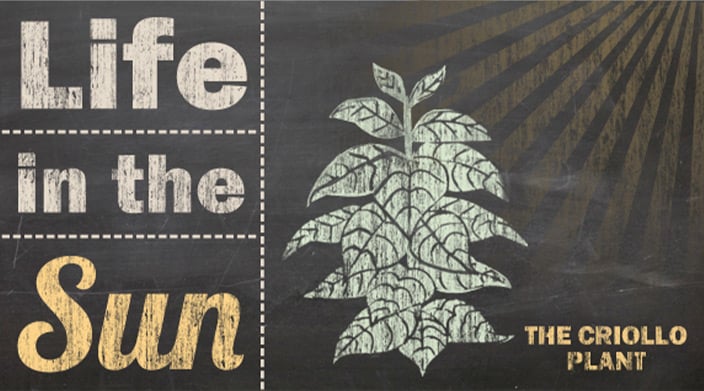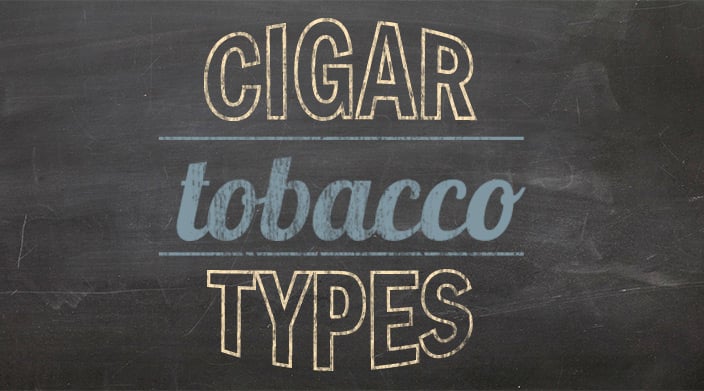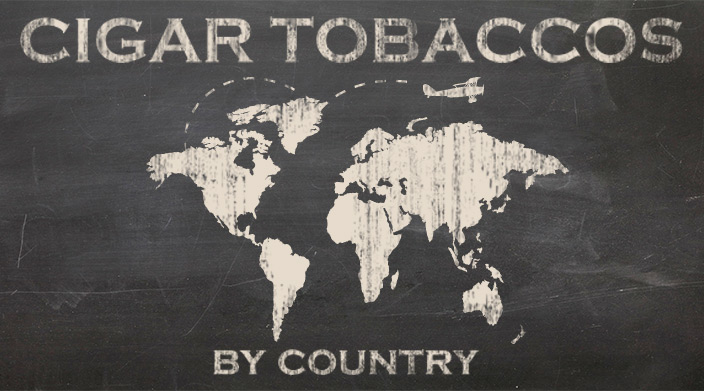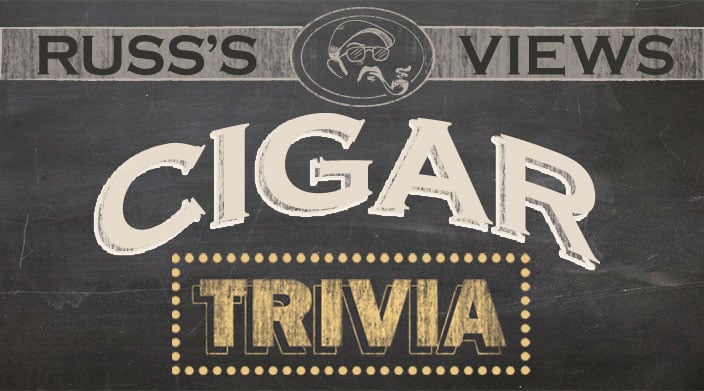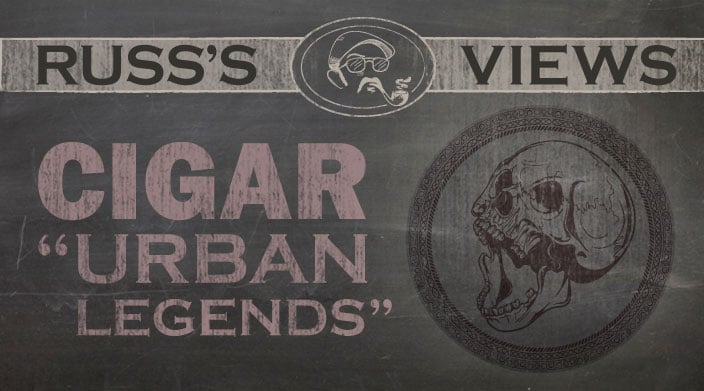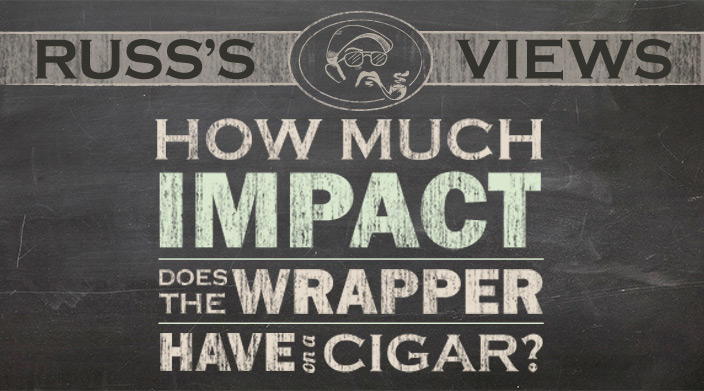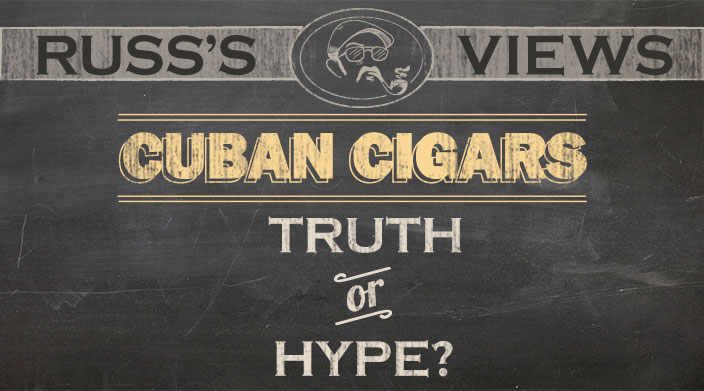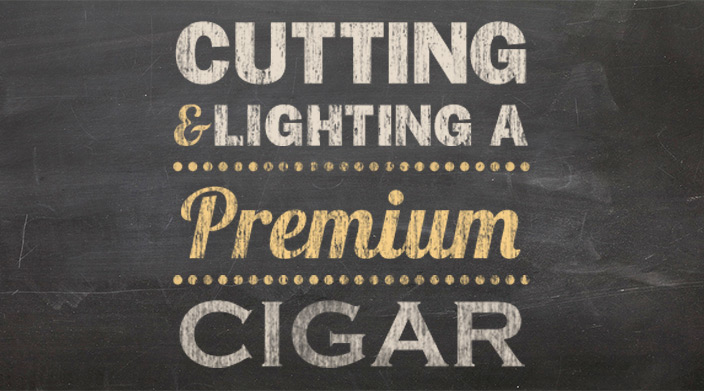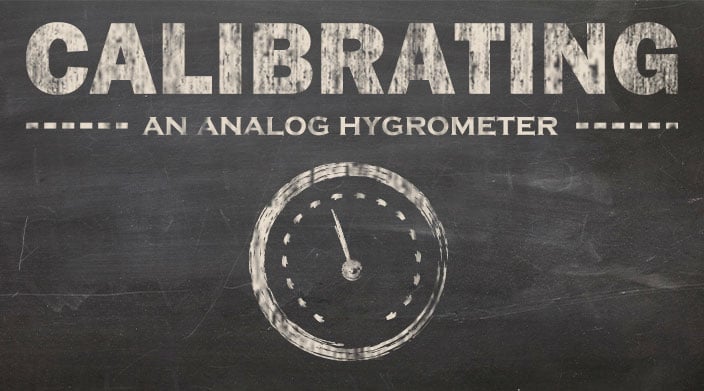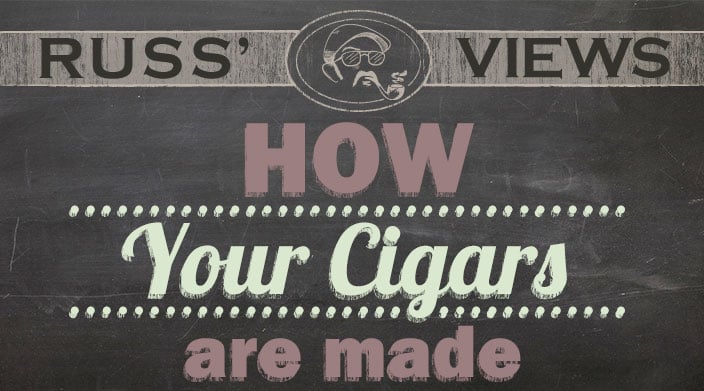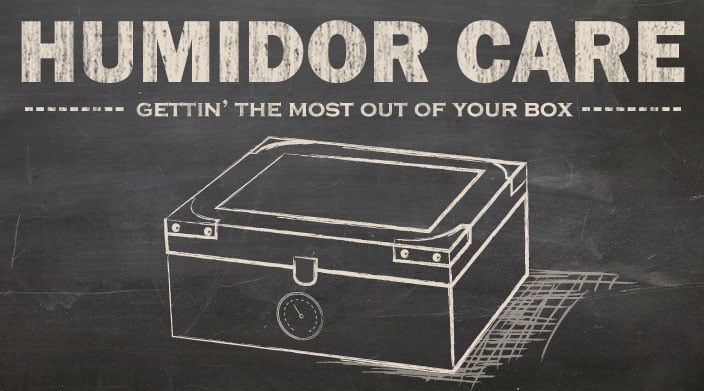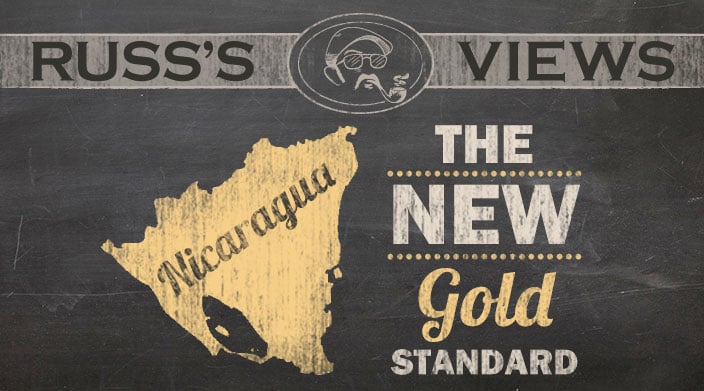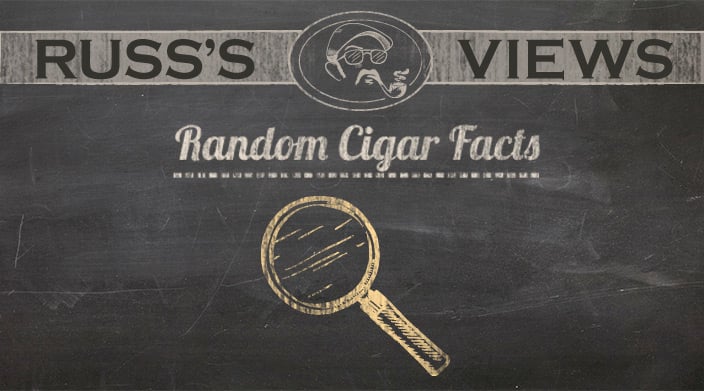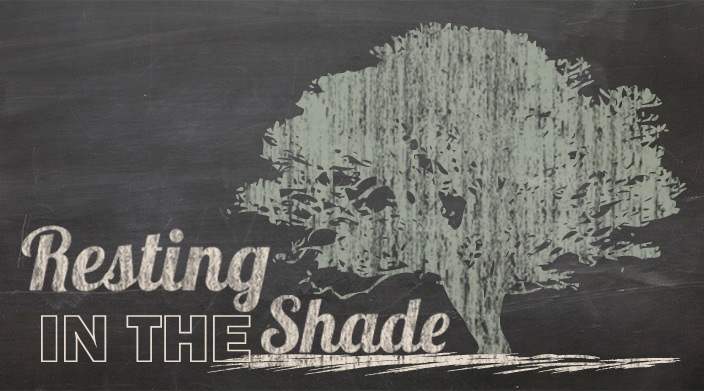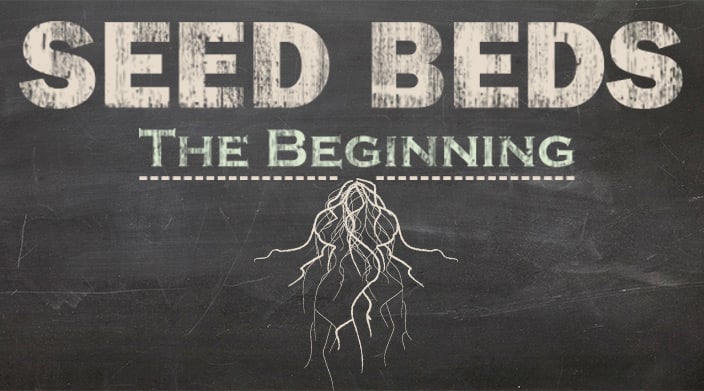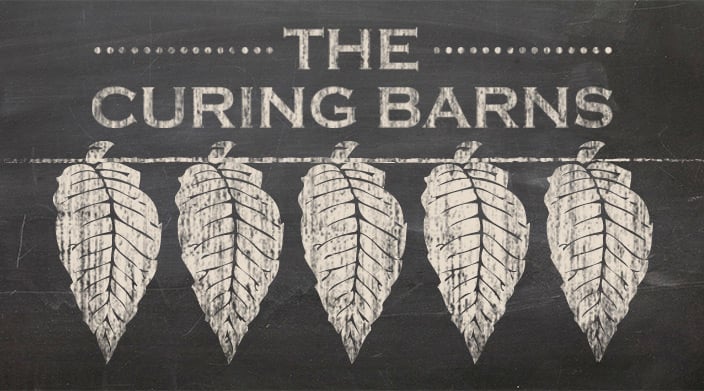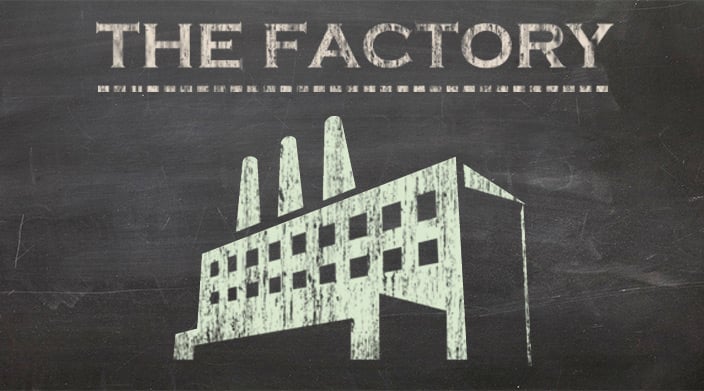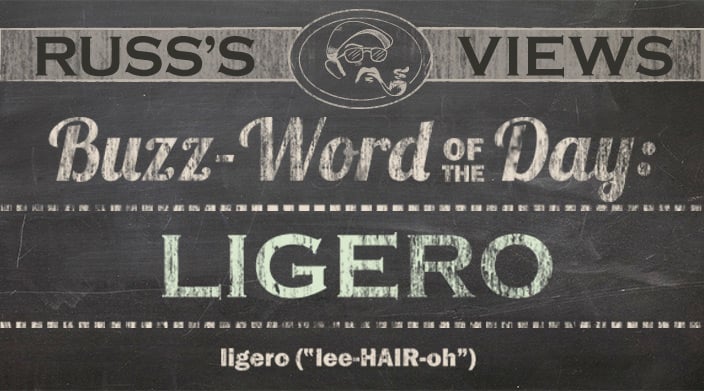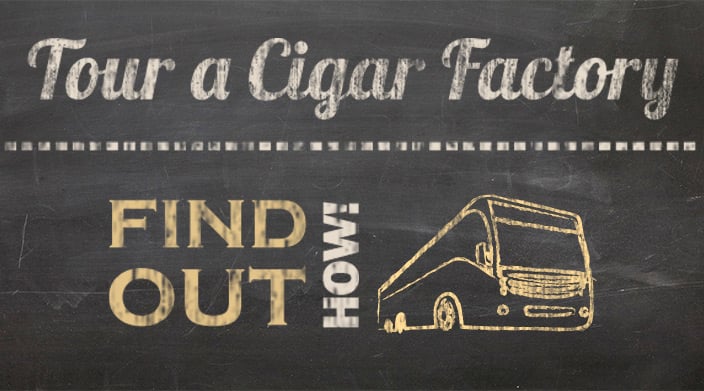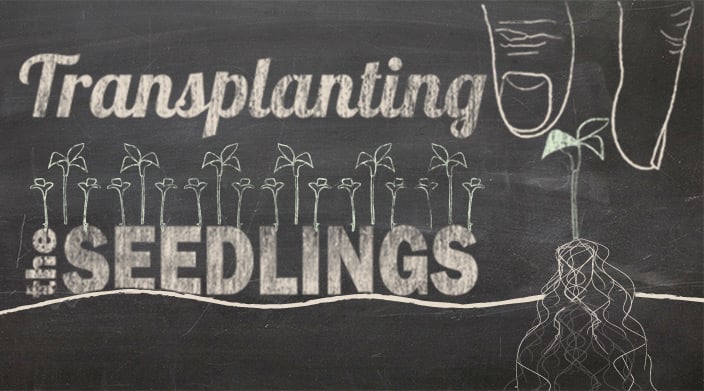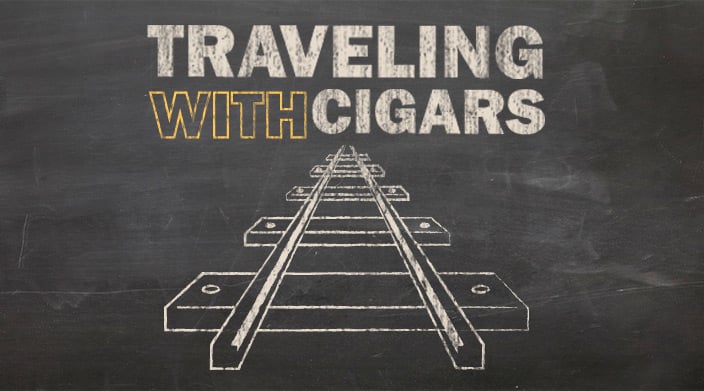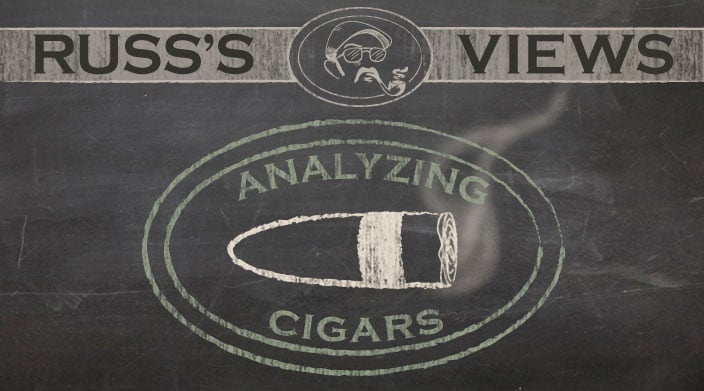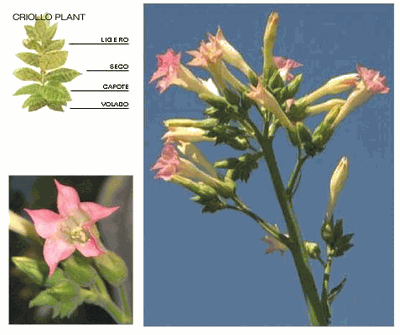
Criollo is a cross between Ecuadorian-seed tobacco, and the old Cuban "black tobacco" plant. Criollo was developed in the early 1920's in Cuba. Sun-grown criollo tobacco cost much less to produce than shade-grown tobacco. Nevertheless, the cultivation process is intense. After each seedling is placed in the ground, the veguro constantly checks each and every plant. Daily, the plants are checked for insects, larvae, and eggs, which could eat the plants' leaves.
Furthermore, the leaves are checked for the dreaded "blue mold," the most feared plague that can befall a veguro. Once blue mold infests itself on a plant, the spores will quickly infect the entire field, leaving withered, useless plants. To compensate for this, veguros use potash as a fertilizer, which increases the criollo plant's resistance to blue mold. The nitrates in the potash encourage the plant's growth. Fungicides are applied to reduce the chance of blue mold; however, these efforts are often not enough. Botanists have been working for over a hundred years to decrease the instances of blue mold, and increase the tobacco plant's resistance to it. However, some of the resulting strains have not been as palatable as their less-resistant ancestors. These new strains of Cuban tobacco have generally been thicker, which has led to a very troublesome situation. Since the tobacco is thicker, the torcedores (cigar rollers), have had an increasingly difficult problem dealing with the tobacco they roll. As the tobacco became thicker, the likelihood of a cigar having a tight draw increased dramatically. There was no way the torcedores could tell that the draw would be tight, because the cigar wouldn't feel hard, nor would the cigar weigh too much, as the cigar would retain the proper weight. With the thicker tobacco, not only did draw problems increase, but the thicker tobacco created many burn problems, as each type of tobacco in the blend had increasingly different rates of burn. The thicker leaves have allowed for increased retention of humidity in the leaves, making for cigars that have a poor burn. This tobacco has made for a frightening increase in plugged cigars, as the thick tobacco can twist too easily in the bunch, creating for a cigar that will not draw. Of cigars made in the early part of 2000 in Cuba, independent surveys have ascertained that about 20-40% of all cigars produced at that time in Cuba were impossible to smoke.
Furthermore, the new strains of filler tobacco seed used in Cuba do not yield the same quality of leaves, and furthermore, the leaves are smaller. To make the problem even worse, the plants do not seem to yield the same quantity of ligero leaves, the leaves that give cigars their distinct flavor. This lack of ligero has changed the blend of many cigars, making for cigars that taste bland even when they are fresh, when they should taste young and somewhat harsh. When they are put side by side their counterparts of earlier production, which have mellowed greatly with age, these new Cuban cigars seem mellow and tasteless. The Camacho line of cigars uses only the original criollo strain of seed, even though it is a risky way to farm, it ensures a consistent quality product, year after year, because it utilizes the same type of seed, criollo, which remains the best seed to be used for filler and sun-grown wrappers.
To enhance the flavor of the leaf, unless the plant is being grown for seed, the buds that would develop into the flower of the plant are removed. This process, known in Spanish as desbotanar, when directly translated means "deflowering." This process usually happens about four weeks after the plant is transferred to the field. Nevertheless, when it is seen, the sight of the flower of the tobacco plant is an attractive one indeed. The plant reaches its maximum height of five feet in about six weeks after it is transplanted from the seedbeds. During the week or two after it stops growing upward, the leaves continue to increase in their size.
Then, the leaves are removed from the plant by hand in stages. During the first week of the harvest, the volado, the layer closest to the ground is removed, so it remains thin and somewhat dry. Volado has excellent burning properties, but often has little flavor. It is not too gummy, and has little resin. It can be used in cigars after a minimum of twelve months of aging after fermentation. Thinner cigars and cigarillos often use volado as the only type of filler tobacco. Cigars with a ring gauge that is less than 38 do not contain anything but volado. Only cigars that have a ring size of 42 or larger utilize multiple types of tobacco for filler. During the second week, the capote, the next layer up from the ground, is removed. The capote is used in the binder of the cigar, and typically needs to be age a minimum of two years. The capote is generally thin, and also has good burning properties. In the third week, the seco is torn off from the plant. Seco and volado are typically used in mellower cigars. Seco is what gives a cigar its subtle qualities. Seco needs at least eighteen months’ worth of aging before it can be used in cigars. During the fourth week, the all-important ligero is removed, and the stalk is cut down. Surprisingly, ligero, which means “light” in Spanish, when cured and fermented, is dark. Dark filler is the hallmark of a cigar packed with ligero, which will produce a full-flavored and powerful cigar. Of all of these types of leaves, if they are all healthy, the criollo plant can produce 16 leaves. Of all of these leaves, the ligero is the most important, due to the fact that it is exposed to the sun for a longer period of time than the other leaves, and hence, has the greatest amount of flavor that can be imparted to a cigar.




